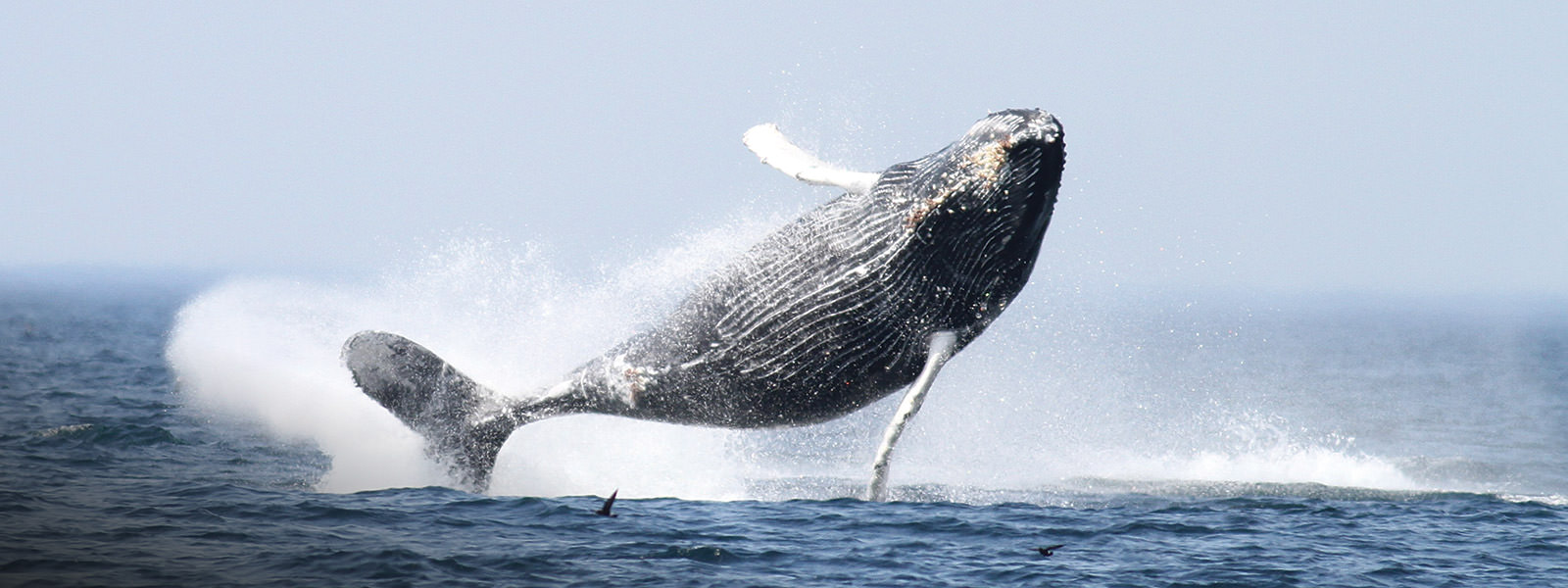Science and Sanctuaries in Sync
By Dr. Leila Hatch

I grew up on a farm, and spent the summers on the Massachusetts shore with my grandparents. Music and social activism were both big parts of my upbringing, as was being in nature. In high school, a researcher moved in next door who studied whale song, a subject that combined many of the things I loved and showed me a path towards a career in science. But I didn't just want to understand how ocean animals use sound underwater; I wanted to conduct science that mattered to the people who make decisions about our environment.
With that in mind, after I finished my Ph.D., I looked for a way to get into the action. I went to Capitol Hill as a Knauss Fellow with the U.S. House of Representatives' Resource Committee. Here, I was up close to the decisions that were being made. I supported work on the reauthorization of the Marine Mammal Protection Act and the Magnuson-Stevens Fisheries Conservation and Management Act. I staffed hearings on the Energy Policy Act, legislation that, among many things, incentivized the development of offshore liquified natural gas facilities. But at the end of my fellowship, I still wasn't sure that I'd found the right path in DC. I wanted more space to develop expertise on the issues that mattered to me.
Sanctuaries and science are both built on models of evolving consensus, and the two can nurture one another."
So back to science I went. I was hired by Stellwagen Bank National Marine Sanctuary as a postdoctoral fellow to support a growing acoustics program, and spent the first month on the job setting up and deploying hydrophones – underwater microphones – to listen in on the sounds produced by marine life and human activities.
Then, a month into the job, my worlds collided.
Two of the only liquified natural gas facilities set to move forward under the Energy Policy Act – the very policy I had watched pass while on the Hill – were to be within just a few nautical miles of the sanctuary's boundaries. And the major concerns with these facilities were risks to whales, both through collisions with ships, and through hearing loss due to noise. The research that I had spent a month setting up would have a direct bearing on the policies I'd been working on over the previous year. Using our data, we collaborated with NOAA colleagues, the natural gas companies, state and federal licensing agencies, and academic partners to find the best ways to reduce impacts to whales.
Sanctuaries and science are both built on models of evolving consensus, and the two can nurture one another. Sanctuaries challenge scientists to innovate and communicate with policymakers and the public, and in turn, scientists challenge sanctuaries to look at natural and cultural resources from new perspectives. Together, we grow, expanding our communal understanding of the ocean.

Dr. Leila Hatch is a marine ecologist at Stellwagen Bank National Marine Sanctuary and the co-leader of NOAA's Ocean Noise Strategy effort.


